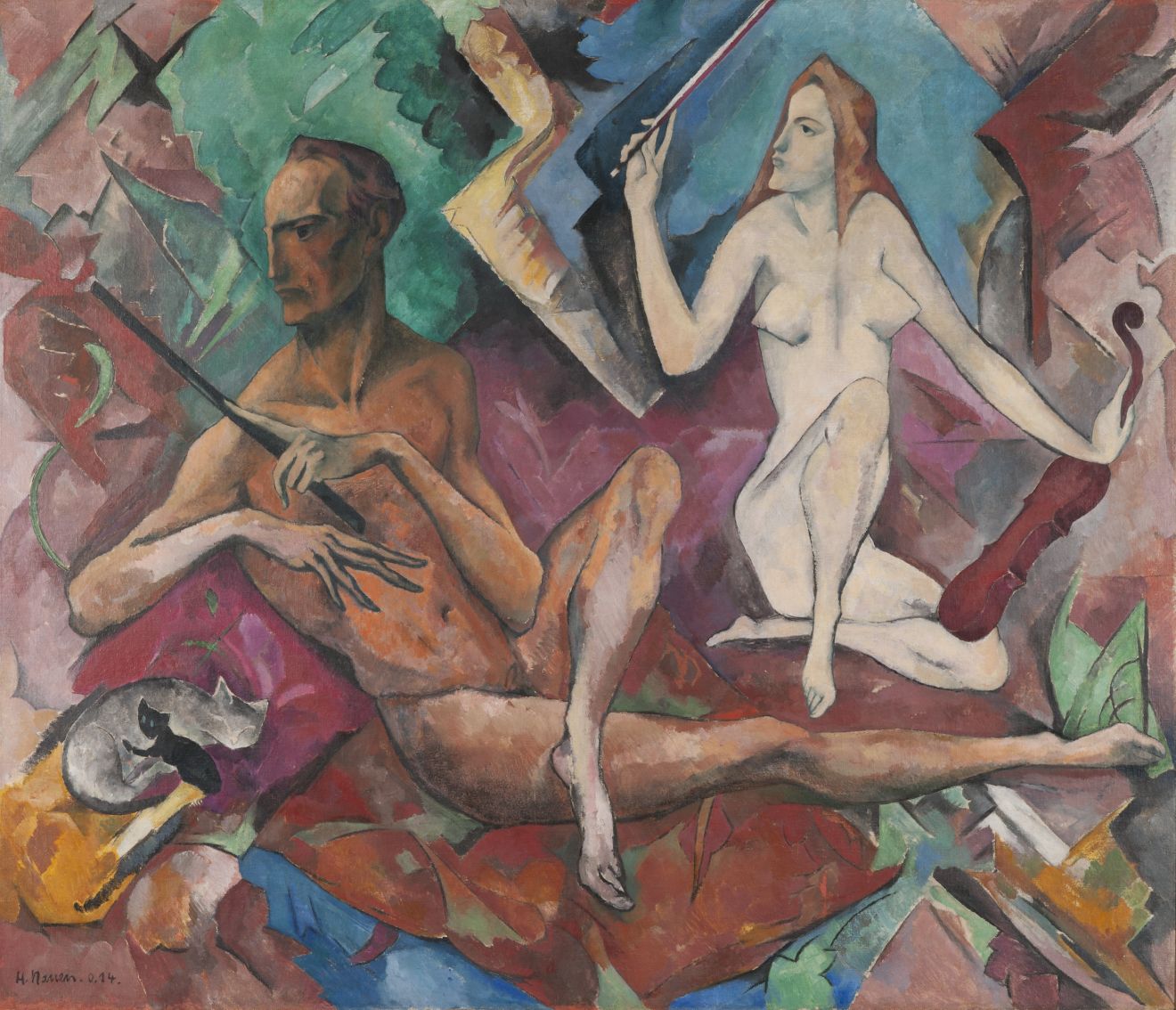
Heinrich Nauen, Die Musik, 1914, Tempera auf Leinwand, Privatbesitz
Foto: Carsten Gliese, Köln
2018 would have marked the 150th anniversary of the birth of Johan Thorn Prikker (1868-1932). In addition, 2019 marked the 100th anniversary of the installation of his artistically revolutionary stained glass windows in the Dreikönigenkirche in Neuss. The handover to the public thus completed was preceded by a long and controversial discussion about the expressive art of modernism. The Clemens Sels Museum Neuss took these events as an opportunity to shed new light on the development of modernism in the Rhineland and to focus on how the city of Neuss was able to become a nucleus of the international modern art scene. In addition to the Dutchman Johan Thorn Prikker, the focus was on his Krefeld student Heinrich Campendonk (1889-1957) and Heinrich Nauen (1880-1940), who was a friend of both. Aspects of the work of Peter Behrens (1868-1940) were also included in the exhibition. The artists established extensive contacts with colleagues, patrons, and clients and became internationally known for an avant-garde and controversial art.
In addition to paintings and drawings, they designed textiles, furniture, murals, mosaics, and stained glass windows for private and public buildings as well as for churches in the Rhineland. They cultivated close contacts with the Cologne Sonderbund and the Deutscher Werkbund, which were equally committed to the modern language of form and which, with their striving for a symbiosis of free and applied art to form a total work of art, anticipated a central idea of the later Bauhaus.
On the basis of over 100 selected works of art - including prominent loans from public and private collections in Germany and abroad - the exhibition illustrated the diverse and at the time highly controversial work of the now established artists Thorn Prikker, Campendonk and Nauen. With this presentation, the museum, as an official project partner, made a contribution to the NRW-wide celebrations of the Bauhaus anniversary "100 years of the Bauhaus in the West" by the LVR.